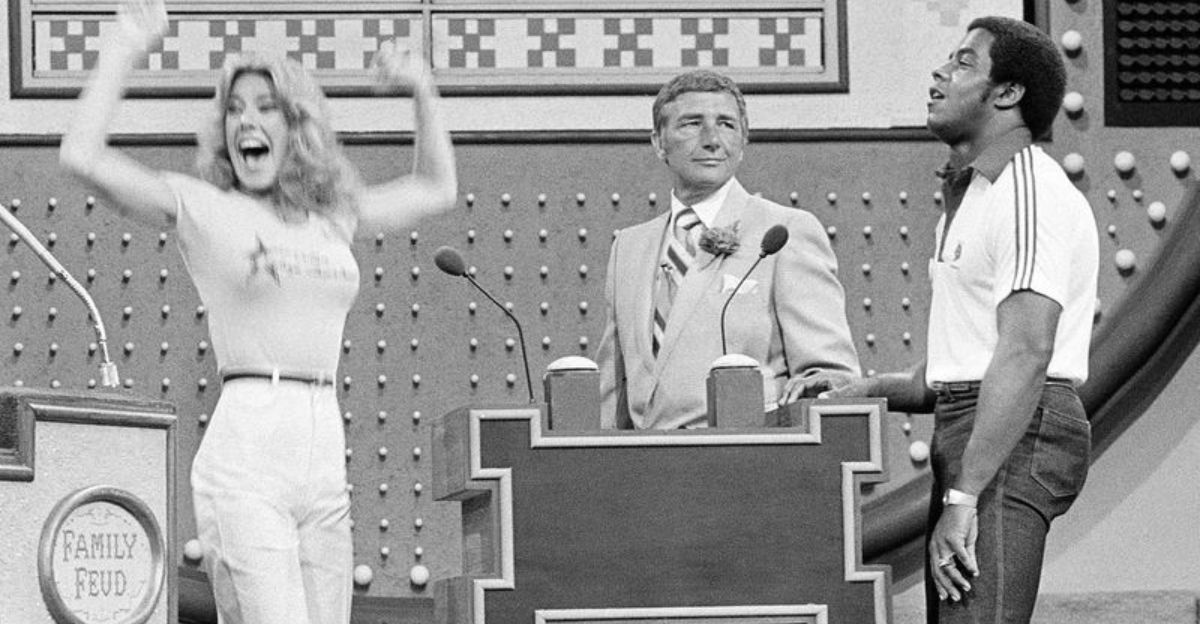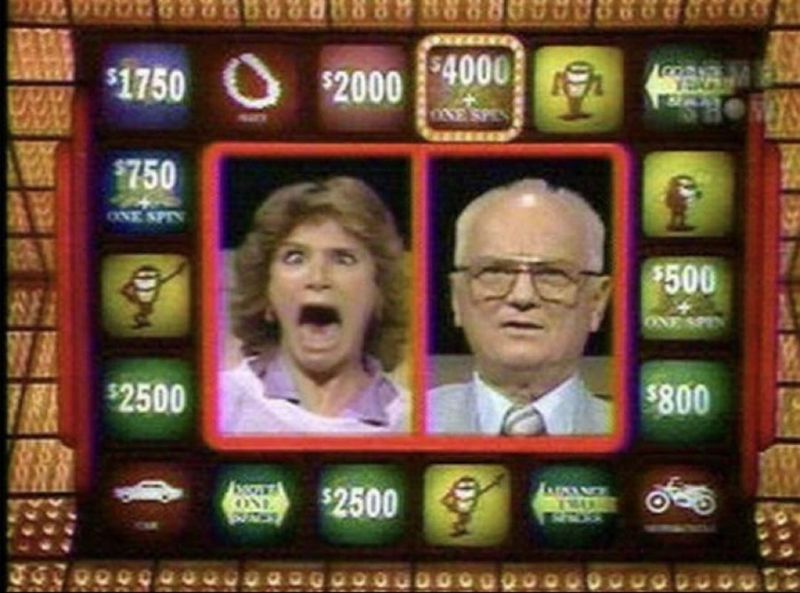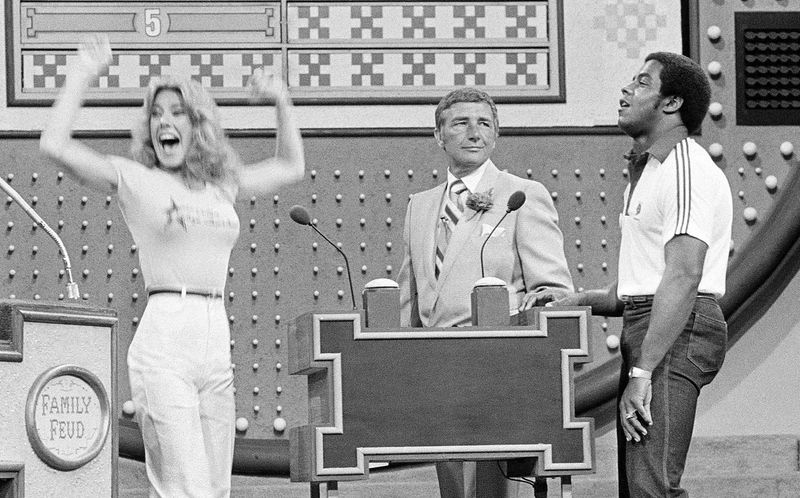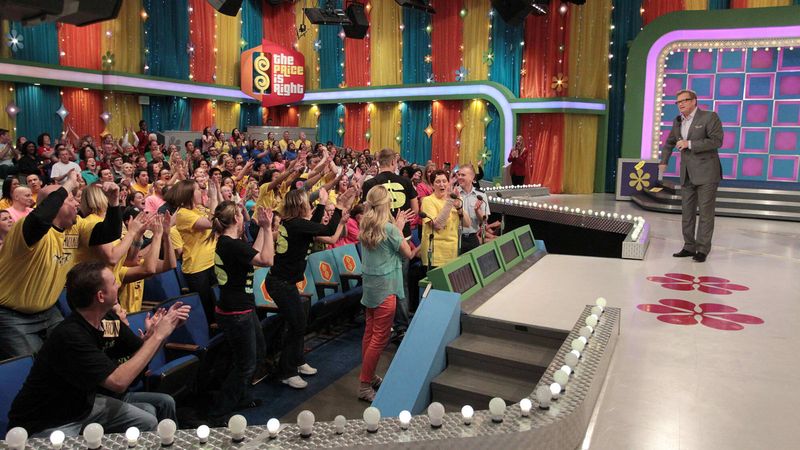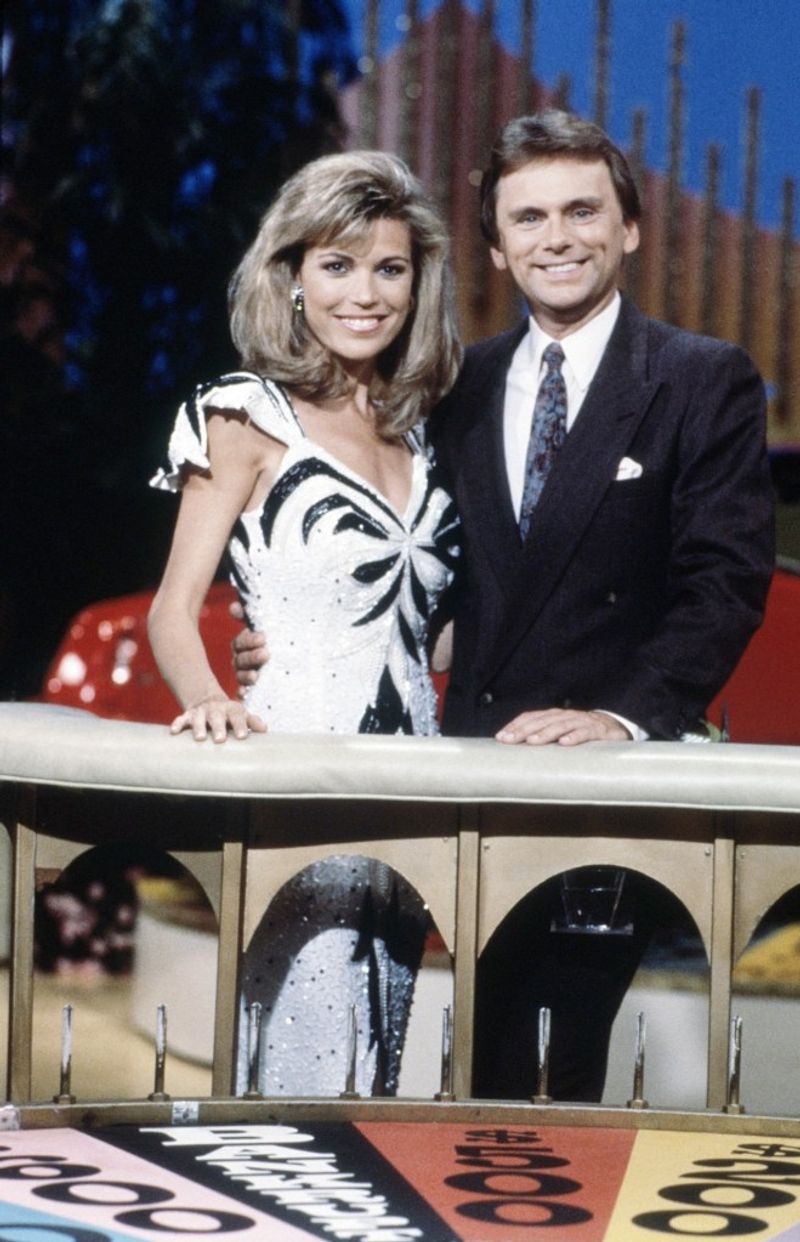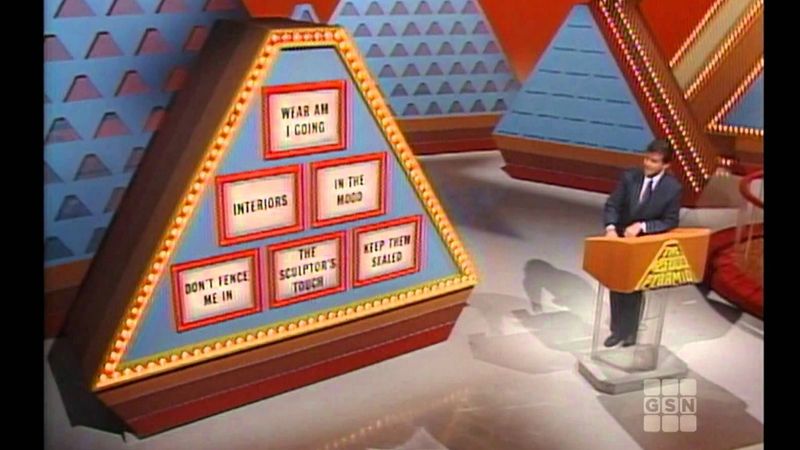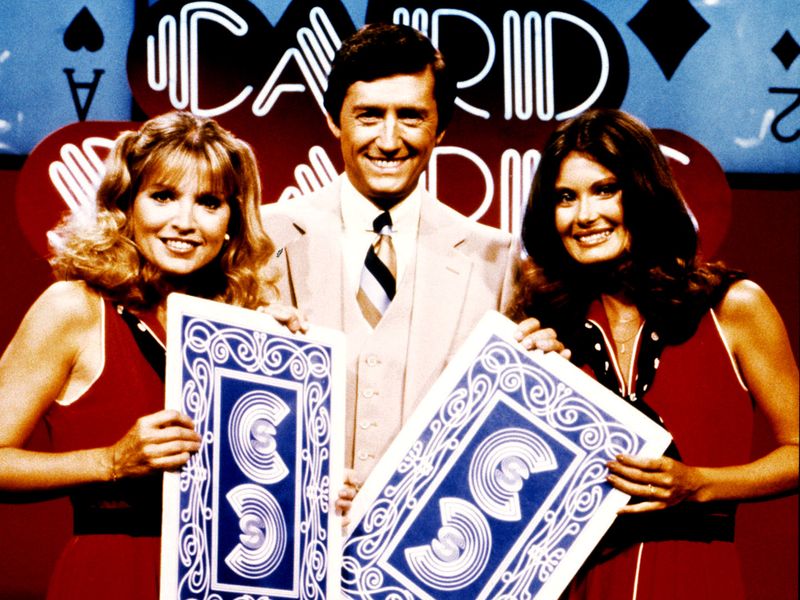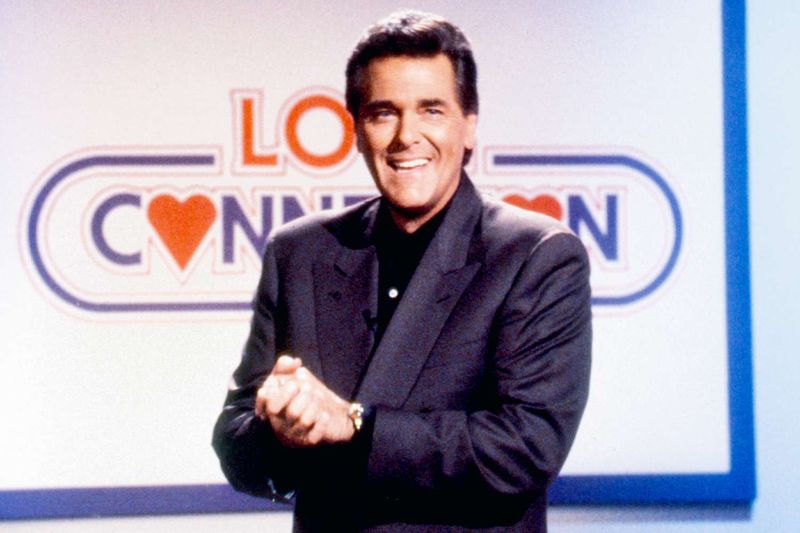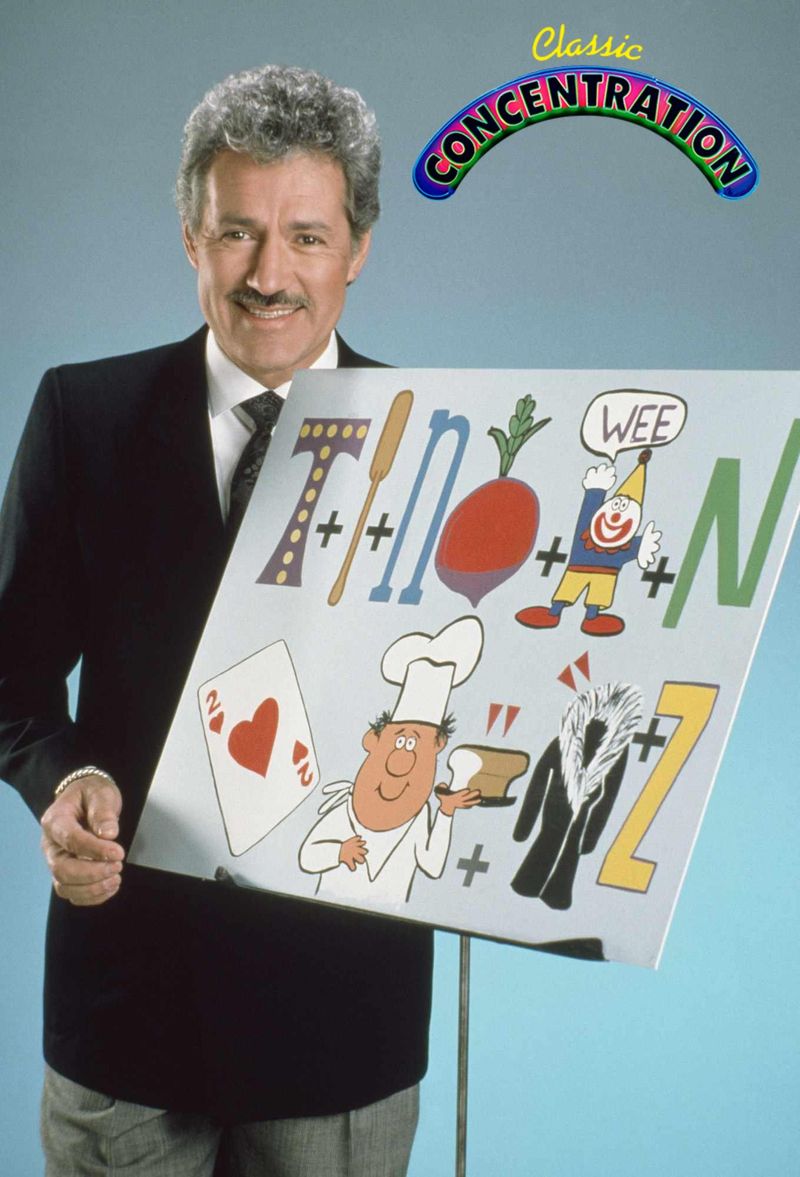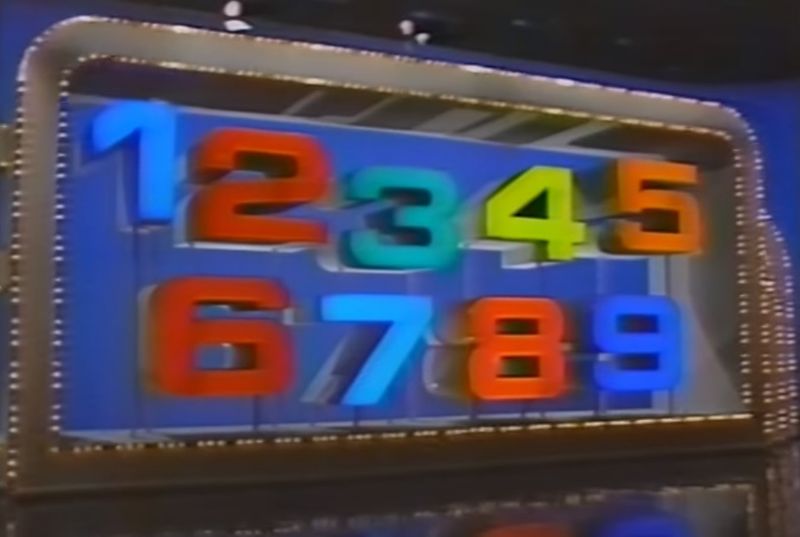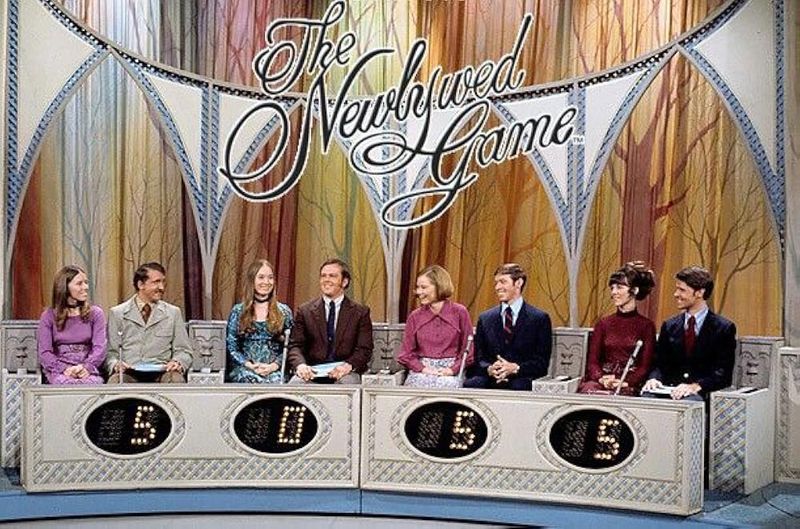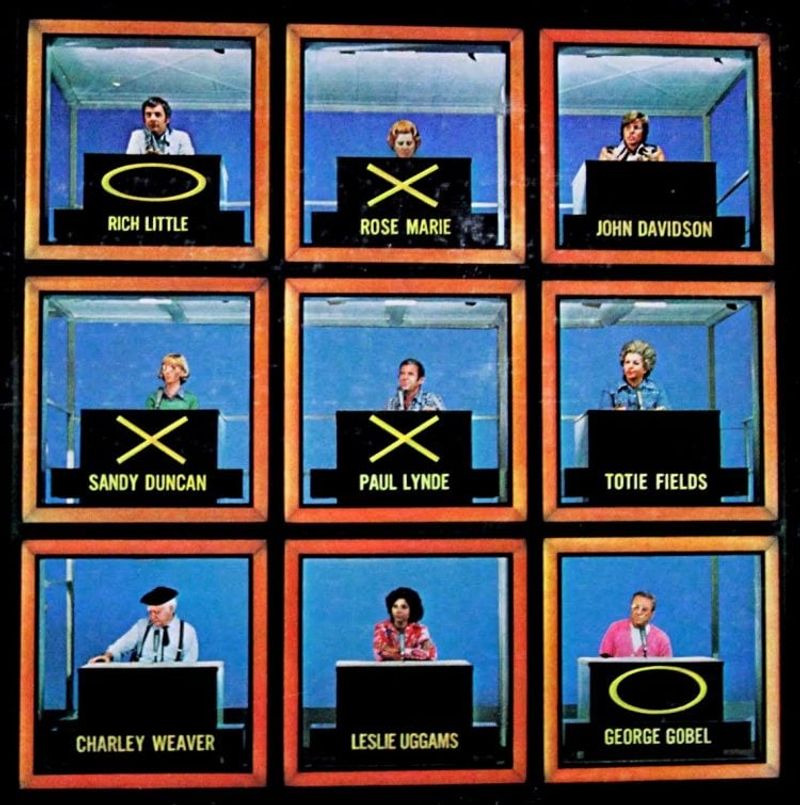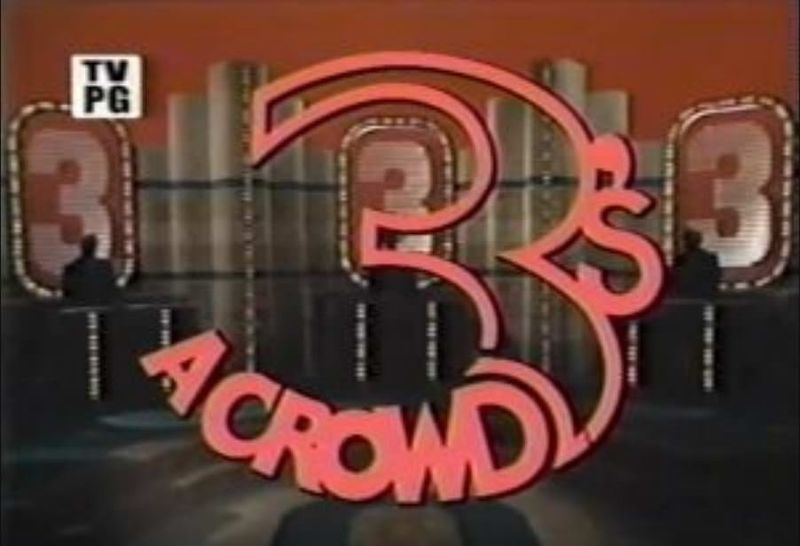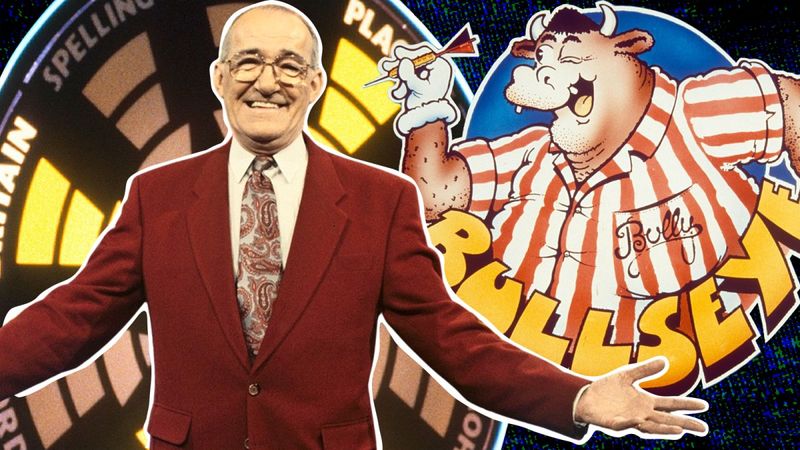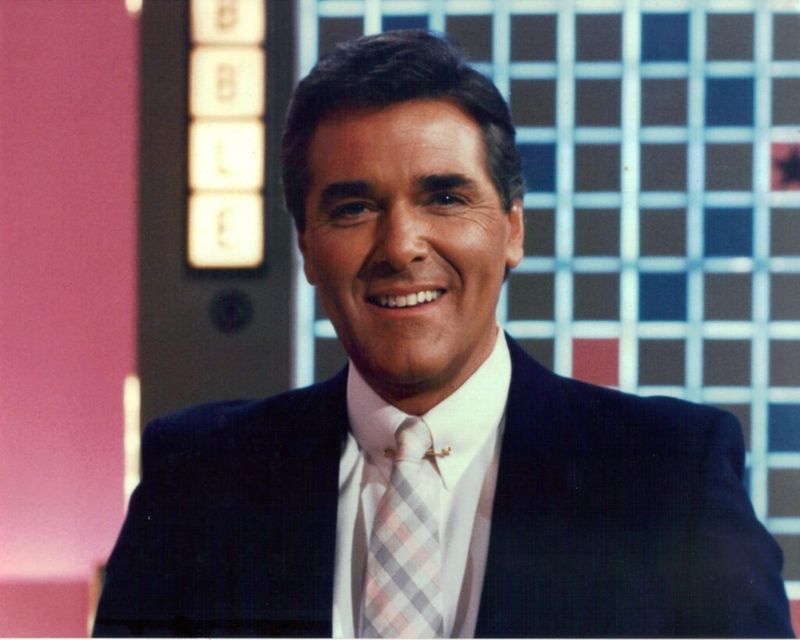Remember those wild ’80s game shows that had us screaming advice at contestants through our TV screens? These colorful, often zany programs combined the perfect mix of prizes, personalities, and unpredictable moments that kept us glued to our sets. Whether contestants were spinning wheels, matching cards, or answering trivia, these shows became part of our daily routines and family traditions.
1. Press Your Luck
“No Whammies, No Whammies, STOP!” became the desperate prayer of contestants trying to avoid the animated red creatures that stole their cash. The big board with its flashing lights and cash prizes created nail-biting tension as players risked everything with each spin. Host Peter Tomarken guided contestants through the high-stakes game where greed often led to spectacular downfalls. The show gained legendary status when contestant Michael Larson memorized the board patterns and won a record-breaking $110,237. Viewers couldn’t help shouting strategy tips at their screens, especially when contestants pushed their luck too far. The Whammy animations—showing the devilish character destroying contestants’ dreams in creative ways—added an extra layer of entertainment to this adrenaline-pumping game show.
2. Family Feud
Richard Dawson’s famous kisses and charming banter made this show unforgettable as families battled to guess the most popular survey answers. Viewers inevitably shouted their own responses at the screen, certain they knew better than the nervous contestants fumbling for answers. The pressure-filled “Fast Money” round had everyone counting points and holding their breath. Families would celebrate wildly or collapse in disappointment as the final points were revealed, creating emotional rollercoasters in living rooms across America. The show’s simple premise—guessing how 100 people responded to everyday questions—proved addictively entertaining. When contestants gave outlandish answers, Dawson’s reactions ranged from gentle ribbing to genuine surprise, making every episode unpredictably entertaining and keeping viewers yelling helpful suggestions from their couches.
3. The Price Is Right
Bob Barker’s signature invitation to “Come on down!” sent selected audience members into frenzies of excitement as they raced to contestants’ row. The pricing games—from Plinko to Cliff Hangers—tested everyday knowledge about consumer goods while providing visual spectacle that had viewers shouting corrections at their screens. Contestants jumping, screaming, and occasionally making complete pricing blunders became part of the show’s charm. The spinning wheel segment created genuine suspense as players aimed for that perfect dollar, with viewers at home tensely coaching every spin. The showcase showdown finale offered tantalizing prize packages that contestants had to bid on without going over. Home audiences couldn’t resist playing along, debating car prices and vacation packages while criticizing contestants’ strategies. Barker’s smooth hosting and the colorful set design made this daytime staple an ’80s sensation that continues today.
4. Wheel of Fortune
The mechanical clicking of the giant wheel and Vanna White’s elegant letter-turning transformed a simple word game into television magic. Contestants’ fortunes changed with each spin, creating dramatic swings that had viewers gasping at bad luck or cheering strategic purchases of vowels. Solving puzzles became a national pastime, with families racing to beat the contestants to the answer. Pat Sajak’s easy charm and witty banter with players added personality to the straightforward gameplay, making each episode feel fresh despite the consistent format. Viewers couldn’t help groaning when contestants made obvious mistakes or bought unnecessary vowels. The bonus round’s limited letter selection and tight time pressure created nail-biting finishes that had everyone shouting potential solutions. This perfect blend of luck, skill, and suspense made Wheel an ’80s phenomenon that transcended into a permanent American institution.
5. Jeopardy!
Alex Trebek’s mustache and authoritative demeanor elevated this quiz show into the intellectual arena of television. The reverse-format questions and increasingly difficult categories created a unique challenge that made viewers feel smart when they knew answers contestants missed. Final Jeopardy wagers often left audiences bewildered by contestants’ risky strategies. The suspenseful music during the 30-second writing period became an iconic soundtrack to decision-making under pressure, while viewers debated proper betting tactics from their living rooms. The show rewarded not just knowledge but quick reflexes on the buzzer, leading to frustrated shouts when knowledgeable players couldn’t ring in fast enough. Trebek’s occasionally sassy responses to incorrect answers added personality to the scholarly proceedings. This perfect balance of education and entertainment made Jeopardy! stand out in the game show landscape of the flashy ’80s.
6. Pyramid
“You’ve got 60 seconds… and GO!” With those words, celebrities and contestants launched into frantic word-association games that had viewers yelling better clues at their TVs. Host Dick Clark presided over this vocabulary pressure-cooker where partners raced against time to communicate categories through careful word choice. The show’s genius lay in its simplicity—one person giving clues without saying the actual words, the other guessing the category. Watching celebrities stumble through descriptions or contestants misunderstand perfectly good clues created moments of comedy and frustration that had audiences screaming the obvious answers. The climactic Winner’s Circle, with its iconic pyramid-shaped board, offered big money for describing six categories in just 60 seconds. The strict rules—no gestures, no spelling, no saying parts of the answers—made the challenge nerve-wracking and utterly captivating for players and viewers alike.
7. Card Sharks
The suspense of deciding “higher or lower” on oversized playing cards created edge-of-your-seat tension in this gambling-themed game show. Contestants answered survey questions to earn the right to play the cards, leading to heated debates about what percentage of people would admit to embarrassing behaviors. Host Jim Perry (and later Bob Eubanks) guided players through rows of face-down cards, with each correct prediction advancing them toward victory. The money cards round, with its increasing stakes and optional freezing ability, showcased the psychology of risk as contestants weighed sure things against potential jackpots. Audiences couldn’t resist playing along, making their own higher/lower predictions and second-guessing contestants’ decisions. The dramatic card-turning moments—especially when an ace or deuce appeared unexpectedly—created visceral reactions from viewers who felt the contestants’ elation or agony with each reveal.
8. Love Connection
Chuck Woolery’s smooth hosting style made this dating show a guilty pleasure as singles recounted their blind dates to a studio audience. The format brilliantly combined the excitement of matchmaking with the voyeuristic thrill of hearing all the awkward, romantic, or disastrous details afterward. Viewers became amateur psychologists, analyzing body language and tone as daters described their experiences. The audience vote on whether couples should have a second date often contradicted the participants’ own desires, creating dramatic moments of revelation. Woolery’s famous “We’ll be back in two and two” catchphrase signaled commercial breaks, but the real entertainment came from the sometimes wildly different perspectives on the same date. Home audiences couldn’t help but shout advice or warnings at contestants making obviously poor romantic choices, making this show an interactive experience long before social media existed.
9. Classic Concentration
Memory skills were put to the ultimate test as contestants matched hidden prizes on a game board to solve rebus puzzles. The dual-challenge format—requiring both recall of prize locations and puzzle-solving ability—created a uniquely engaging game that exercised viewers’ brains alongside the contestants’. Alex Trebek brought his characteristic dignity to this show, though with a lighter touch than his Jeopardy! persona. The growing excitement as pieces of the rebus puzzle were revealed had audiences working to solve the picture puzzles before the players could. The car match bonus round, where contestants had to pair identical car symbols within 35 seconds, produced some of television’s most nail-biting moments. Viewers inevitably found themselves pointing frantically at the screen, trying to guide contestants to matches they’d spotted. This combination of memory challenge and visual puzzles made Concentration a standout in the crowded game show landscape.
10. High Rollers
Giant fuzzy dice and a game board filled with numbers created the backdrop for this probability-based game show. Contestants answered trivia questions for the chance to roll the dice and eliminate numbers from the board by finding combinations that matched their roll. Alex Trebek hosted this numbers game that combined knowledge with gambling instincts. Players had to quickly calculate possible number combinations while deciding which sections of the board to tackle first, leading to strategic dilemmas that had home viewers debating the best approach. The big money dice roll finale raised the stakes dramatically, with contestants risking their winnings on one final roll. The physical act of throwing the oversized dice added a tactile element missing from many game shows, making each roll a moment of genuine suspense that had audiences holding their breath alongside the contestants.
11. The Newlywed Game
“Making whoopee” became a famous euphemism thanks to host Bob Eubanks’ genteel approach to sometimes risqué questions on this marriage-testing show. Recently married couples answered questions about each other, often revealing hilarious misunderstandings about their partners’ preferences and habits. The show’s genius lay in separating spouses before questioning, creating dramatic reveals when answers didn’t match. Couples’ reactions ranged from loving laughter to genuine arguments, giving viewers a voyeuristic peek into the early days of marriage. Audiences couldn’t help but evaluate their own relationships against the contestants’, wondering how well they would fare under similar questioning. The show’s simple premise—testing how well newlyweds knew each other—created comedy gold when innocent questions about household habits or wedding memories led to unexpected answers that had viewers gasping or howling with laughter.
12. Hollywood Squares
Celebrities filled a giant tic-tac-toe board, offering witty—and often outrageous—answers to trivia questions in this game of strategy and humor. Contestants had to determine whether stars were telling the truth or bluffing, creating a perfect blend of comedy and gameplay that had viewers laughing while shouting advice. Center square Paul Lynde became legendary for his sarcastic quips and double entendres. The rotating cast of celebrities, from Whoopi Goldberg to Joan Rivers, brought unique personalities to their squares, making each episode unpredictably entertaining. Host Peter Marshall expertly managed the chaos, keeping the game moving while giving stars room for their comedic moments. Viewers at home played along on two levels—trying to answer the trivia questions themselves while also guessing which celebrities were truthful. This combination of star power, humor, and game strategy made Hollywood Squares a standout in the crowded ’80s game show landscape.
13. Three’s a Crowd
Perhaps the most controversial game show of the decade, “Three’s a Crowd” asked male contestants questions that were then compared to answers from both their wives and secretaries. The provocative premise—discovering who knew the man better—created uncomfortable moments that had viewers cringing and gasping in equal measure. Host Jim Peck navigated the awkward territory as the show deliberately tried to expose potential improprieties or embarrassing revelations. Questions often ventured into personal territory, from bedroom preferences to secret habits, creating tension that sometimes spilled into genuine discomfort. The show lasted only five months in 1980 before being canceled due to public backlash. Viewers couldn’t look away from the train-wreck potential of each episode, even while questioning the ethics of potentially damaging real relationships for entertainment. This short-lived show represents the boundary-pushing experimentation that characterized some ’80s television.
14. Bullseye
Combining darts precision with general knowledge questions, this British import created a unique sports-quiz hybrid that had viewers mentally calculating scores alongside contestants. Teams of two competed to build prize money by answering questions and hitting specific sections of a dartboard. Host Jim Bowen’s folksy charm and catchphrases like “You can’t beat a bit of Bully” became part of ’80s pop culture. The show’s mascot, Bully—a cartoon bull in a dart player’s outfit—added character to the proceedings, appearing in animations throughout the show. The finale featured the winning team throwing for big prizes in the “Prize Board” round. Viewers tensely watched as contestants aimed for specific numbered segments representing different prizes, from kitchen appliances to dream vacations. This combination of skill, knowledge, and luck created a uniquely engaging format that had audiences shouting advice about both dart-throwing technique and trivia answers.
15. Scrabble
Word lovers found their perfect game show in this adaptation of the classic board game, hosted by Chuck Woolery. Contestants solved word puzzles by drawing letter tiles and placing them in the correct positions, combining vocabulary knowledge with strategic thinking. The “Scrabble Sprint” round pitted winners against each other in a race to solve word puzzles against the clock. The tension mounted as players frantically tried to unscramble letters while the iconic timer ticked down, creating edge-of-your-seat moments for word game enthusiasts. Home viewers couldn’t resist playing along, mentally rearranging letters and shouting solutions at their screens. The show’s bonus round, with its increasing prize levels for solving more difficult words, created genuine excitement around language skills. Woolery’s smooth hosting style and gentle ribbing of contestants who struggled with obvious words added personality to this cerebral competition.
